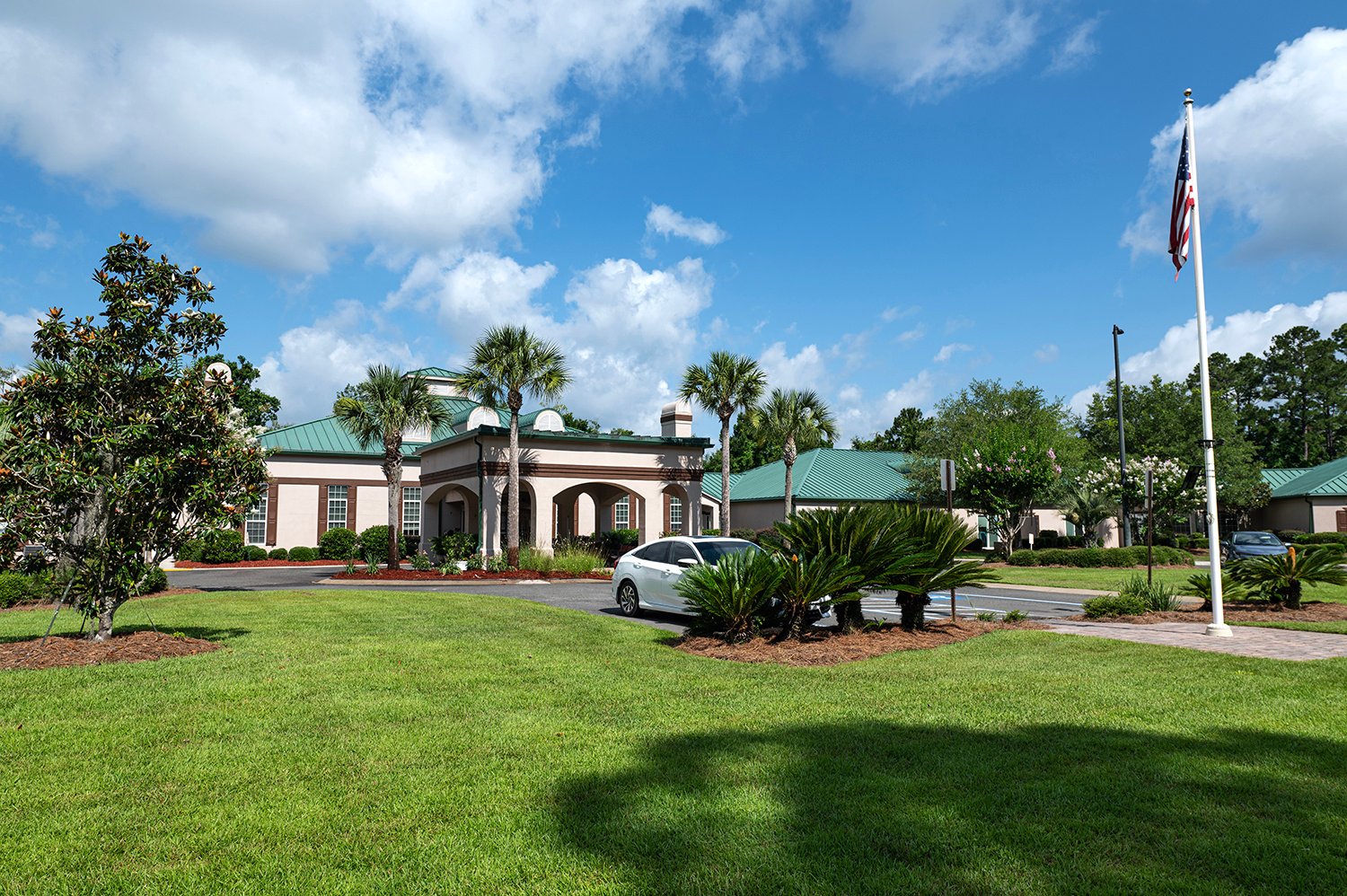Download our Free Guide:
Senior Living Explained
Learn what different types of senior living care are available and which one best fits your needs now and in the future.

.jpg)

June is CPR and AED awareness month. The message is simple: CPR is “the most profound, life-changing thing you could potentially learn and do for someone,” according to Dr. Michael Emery, a sports cardiologist at the Cleveland Clinic.
Over 350,000 cardiac arrests in the US occur outside a hospital each year – 70% of those happen in homes.
.jpg?width=450&height=300&name=2024%20St.%20Simons%20Spring%20Fling%20(623).jpg) Cardiopulmonary resuscitation (CPR) is an emergency procedure that aims to restart a heart that has stopped beating. If we all knew CPR and how to use an AED, you might save a life. Or someone else might save yours.
Cardiopulmonary resuscitation (CPR) is an emergency procedure that aims to restart a heart that has stopped beating. If we all knew CPR and how to use an AED, you might save a life. Or someone else might save yours.
However, while somewhere between half to two-thirds of Americans say they have had CPR training, most of them have no idea that the technique has changed in recent years. Furthermore, many are not willing to actually perform CPR because they’re worried about injuring the person or negative legal ramifications.
.jpg?width=450&height=300&name=St.%20Simons%20Spring%20Family%20Social%20(9233).jpg) Don’t Hesitate, Say Experts!
Don’t Hesitate, Say Experts!
Time is of the essence because the sooner CPR is performed, the greater the chances of survival. Literally, every second counts. Receiving immediate chest compressions can double or even triple someone’s chance of surviving cardiac arrest. Good Samaritan laws protect bystanders who provide CPR in good faith.
 Just Two Hands Are All You Need
Just Two Hands Are All You Need
Mouth-to-mouth breathing used to be a key part of CPR, but studies have shown that doing only chest compressions produces better results. You can learn how online, though taking an in-person class is best. Besides your hands, the only thing you’ll need is a musical memory.
Remember the Bee Gees song “Stayin’ Alive”? If not, take a listen to this instrumental version. Why? Because the beat of this aptly-named tune is exactly right for timing chest compressions. Just sing it to yourself as you perform CPR.
 So, What’s AED?
So, What’s AED?
An automated external defibrillator (AED) is a medical device that analyzes heart rhythm and determines if electrical shock (defibrillation) is needed to re-establish proper rhythm. If so, the device delivers the shock. In recent years, AEDs have become commonly available in public buildings and offices. Perhaps you’ve seen one on a wall and wondered what it was.
You do not need special training to use an AED. The device is easy to use and entirely safe.
.jpg?width=450&height=300&name=2024%20St.%20Simons%20Spring%20Fling%20(598).jpg) CPR + AED Boosts Chance of Survival
CPR + AED Boosts Chance of Survival
While either CPR or using an AED can help save a life, the National Institutes of Health says using both can increase survival rates to 70% -- nearly double the rate if only CPR is performed. That’s because the CPR and an AED work differently. CPR helps maintain blood flow, while the AED ensures correct heart rhythm.
Since June is national CPR and AED awareness month, this is the perfect time to take action. Get trained on two-hands CPR. Take note of where AEDs are located when you’re out and about. And help spread the word about the critical importance of learning CPR and using those skills if ever they are needed.
Senior Living at Magnolia Manor
At Magnolia Manor, the holistic well-being of our seniors is our priority. We offer a variety of activities that nurture their physical, mental, social, and spiritual health, ensuring our residents flourish. If you’d like to learn more about senior wellness at any of our eight campuses in south Georgia, contact us at 1-855-540-LIFE.
Learn what different types of senior living care are available and which one best fits your needs now and in the future.
